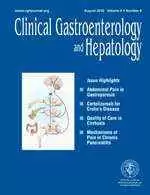
Celiac.com 04/24/2013 - Doctors classify refractory celiac disease (RCD) depending on the presence or absence of monoclonal expansions of intraepithelial lymphocytes (IELs) with an aberrant immunophenotype.
 A team of researchers recently set out to determine whether IEL parameters have any connection with mortality and morbidity in cases of refractory celiac disease.
A team of researchers recently set out to determine whether IEL parameters have any connection with mortality and morbidity in cases of refractory celiac disease.
Celiac.com Sponsor (A12):
The research team included C. Arguelles-Grande, P. Brar, P. H. Green, and G. Bhagat. They are variously affiliated with the Celiac Disease Center, and the Departments of Medicine, Pathology and Cell Biology, at Columbia University Medical Center in New York, NY.
The team used immunohistochemistry to assess IEL phenotype and polymerase chain reaction to determine T-cell receptor (TCR) gene rearrangement in 67 patients with RCD type I, and six patients with RCD type II. They considered a monoclonal TCR gene rearrangement and presence of greater than 50% CD3 CD8 IELs to be abnormal.
They used Kaplan-Meier and Cox proportional hazard analyses to determine the time to worsening of clinical symptoms and the predictors of worsening. The team found 30 patients with less than 50% CD3 CD8 IELs, and eight with monoclonal TCR rearrangements. Three patients died and 40 suffered clinical worsening despite treatment.
Estimated 5-year survival rates were 100% in patients with greater than 50% CD3 CD8 IELs and polyclonal TCR, but just 88% in patients with less than 50% CD3 CD8 IELs and 50% in patients with monoclonal TCR.
All patients with monoclonal TCR gene rearrangement with less than 50% CD3 CD8 IELs showed shorter average time to clinical worsening of symptoms (11 mo), when compared to patients with less than 50% CD3 CD8 IELs alone (21 mo), polyclonal TCR (38 mo), or greater than 50% CD3 CD8 IELs alone (66 mo).
After the team adjusted for age and gender, they found that the presence of less than 50% CD3 CD8 IELs was the only factor associated with increased risk for clinical worsening, despite negative celiac blood screens (hazard ratio=4.879; 95% confidence interval, 1.785-13.336; P=0.002).
This means that RCD patients with <50% CD3 CD8 IELs are at risk for clinical worsening, and that RCD patients who also show monoclonal TCR gene rearrangement have higher mortality rates.
Overall, the assessment of IEL phenotype and TCR gene rearrangement can provide important information regarding morbidity and risk of death in cases of RCD.
Source:
- Open Original Shared Link





Recommended Comments
There are no comments to display.